NeXT
Veteran Member
The biggest software issue with old computers today is disks. How do we archive them? How do we write new ones? In a time when the industry was still settling on formats there was a hell of a lot of them and we are STILL finding niche ones. In modern years a number of products have come on the market which helped assist with getting a lump of data on and off disks. Some of them do a good job while others are half-baked. The there's products like the KryoFlux which take the community by the balls and try to squeeze the money out of them. That being said we don't NEED to use these modern imaging solutions. They are convenient, but there's equally powerful tools that existed in the DOS era.
Teledisk and IMGdisk are two such programs. Both are still highly regarded. Building a machine to support either and the variety of drives however is the issue.
Many of the disk imaging systems I've seen are basically PC towers loaded down with floppy drives. This works, but if you need to make any adjustments or more likely you need to clean the heads you need to dismantle everything to perform these tasks. Other systems are quite "open concept" in that it's a motherboard, power supply and a floppy controller spread out over a table and the necessary hardware plugged in. This also works, but with so many critical components exposed and not really secured you run the risk of damaging your imaging system.
I wanted to build a machine that kept the core hardware of the imaging system secure and enclosed while not interfering with the drive or drives being worked on. At the same time I didn't want cables to just create a mess of unused wiring which could add to reliability problems should they be damaged or wear out. My solution was the Disk-o-Matic.


This oddly shaped system is a powerful disk and drive imaging station. It can handle floppy drives obviously but it can also handle IDE and even SCSI devices. Additionally you have serial and parallel ports to allow it to adapt to even more complicated drive types. For example a parallel port allows you to use an X1541 adapter to handle Commodore 1541 floppy formats.
The operating system is of course MS-DOS. Over the last 35+ years a lot of applications have been developed and are still being developed for the OS for the purpose of imaging. It's low-level and in many cases talks directly to the hardware and at the same time is reliable. Provisions have been made at this time to also allow it to multiboot Linux however the addition of several older devices will require a manual kernel compilation to be performed.
Looking at the hardware the first thing to note on the exterior is the large antistatic mat. This is where you can place your drive. It doesn't need to be secured to anything and direct access to the innards are not obstructed by any sort of framework. On the side of the CPU enclosure are a variety of connectors.
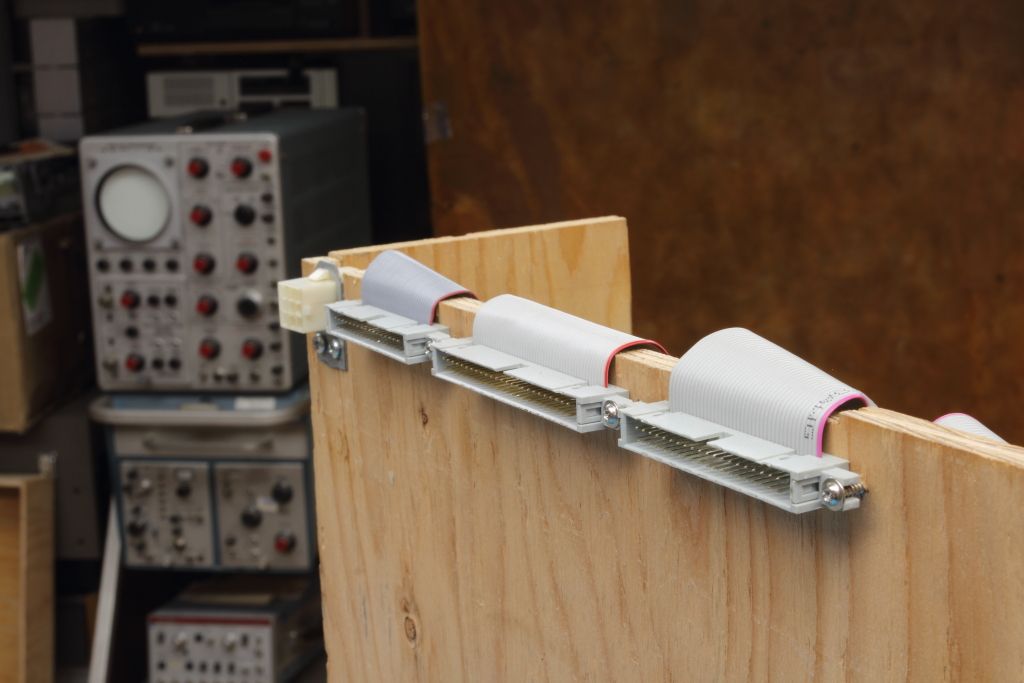

These are the main data and power connections. Data passes through passive ribbon bulkheads so that you don't need to be plugging into the boards directly and that can all be kept out of the way. This also means that both the connection from the drive to the bulkhead and from the bulkhead and the drive can be replaced separately in the event they are damaged.
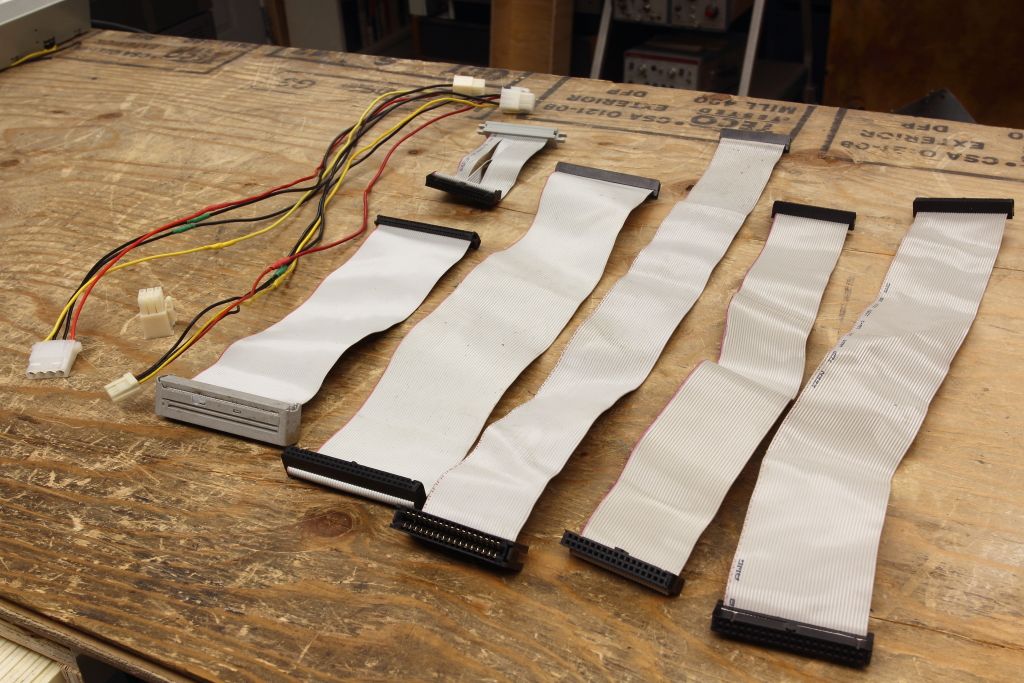

The cabling is all keyed and otherwise flexible to work with, literally. Additionally if you need to create a custom cable for a nonstandard drive you can quite easily assemble one and plug it in without, again, damaging the cabling plugging into the boards. For example if you wanted to use an FDADAP to attach an 8" drive you simply need the 50 pin edge to BERG cable and the passive 34 pin cable. Need power? no problem. That 9 pin connector at the back provides almost every standard voltage you would need. +5, +12, -5, -12, +24 and even 120v AC are all available at the socket. Just pin the new cables accordingly.
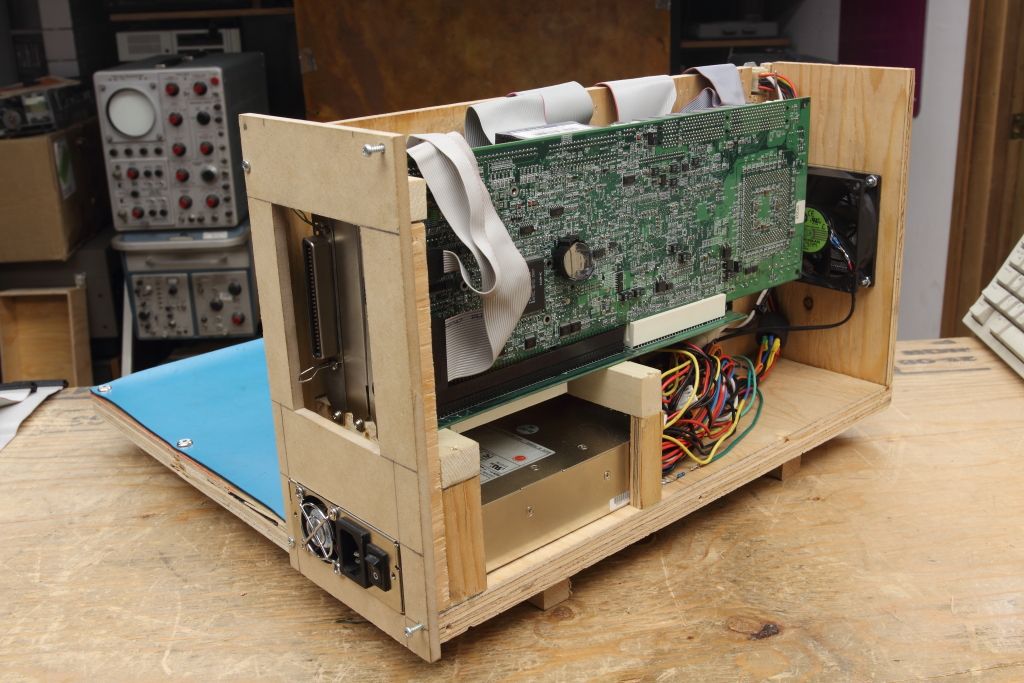

While the inside of the enclosure is relatively clean the convenience of dropping a drive on the deck and plugging it in does not include the ease of maintenance. Everything in here is pretty tightly packed and secured. Cables are custom crimped and framing considered. Accessing items such as the main system requires a large amount of dismantling, so don't make any errors when putting it together. ; )
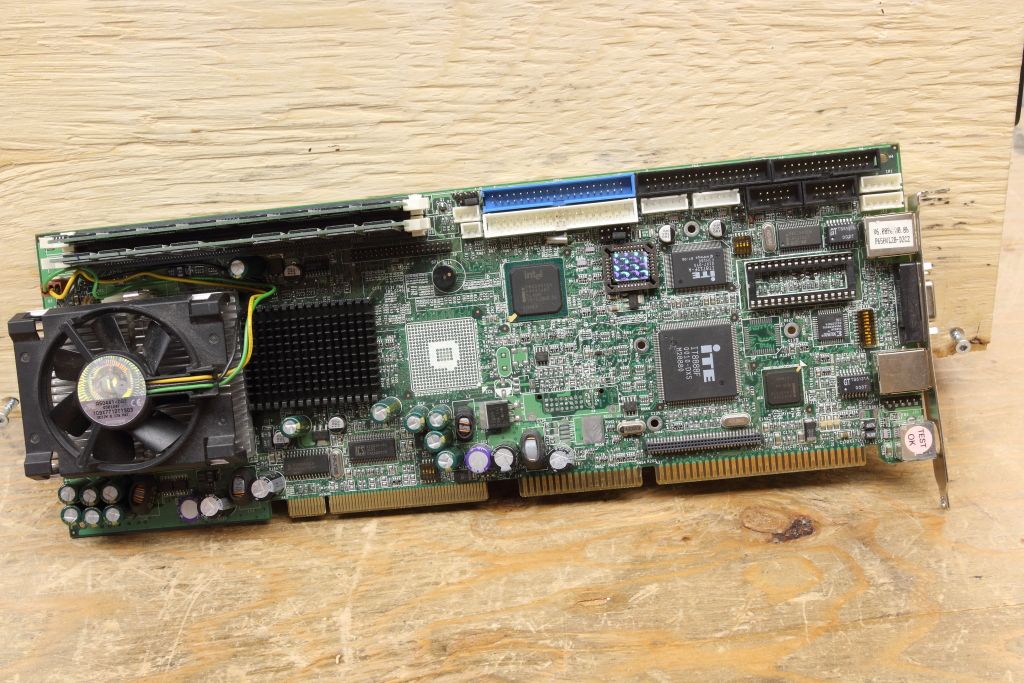
The computer itself is a PEAK-650 Single Board Computer with a 1ghz Celeron processor and 256mb of PC100 ram Standard AWARD BIOS and basic I/O. I like this form factor because it lets you build small systems and not needing a lot of active cooling. The CPU needs it but its own fan is backed up by a main enclosure fan. This is the board where the IDE interface is used but the floppy interface is disabled. That's because this controller is "inferior".
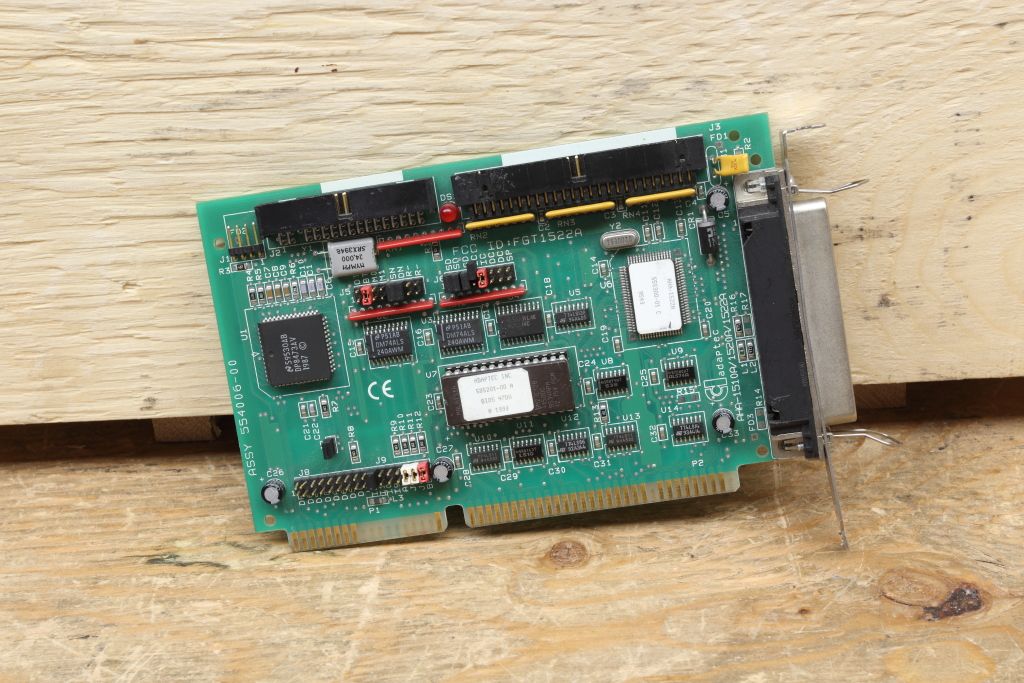

This is the Adaptec AHA-1522A. It's an older non-PnP 16-bit ISA SCSI controller but it is well known to contain a National Semiconductor DP8473AV floppy controller. Floppy controllers are not all made alike and while many controllers will not include support for the more oddball formats nobody was using anymore THIS was happy with all of them. If you run TestFDC on one of these chips it will pass every format test it can throw at it, so this is really what you want. In addition you also get a high quality Adaptec SCSI controller. This allows you to in theory access SCSI hard drives for imaging and even block-level reading and writing. Something I've used heavily under linux, but not so much under DOS.
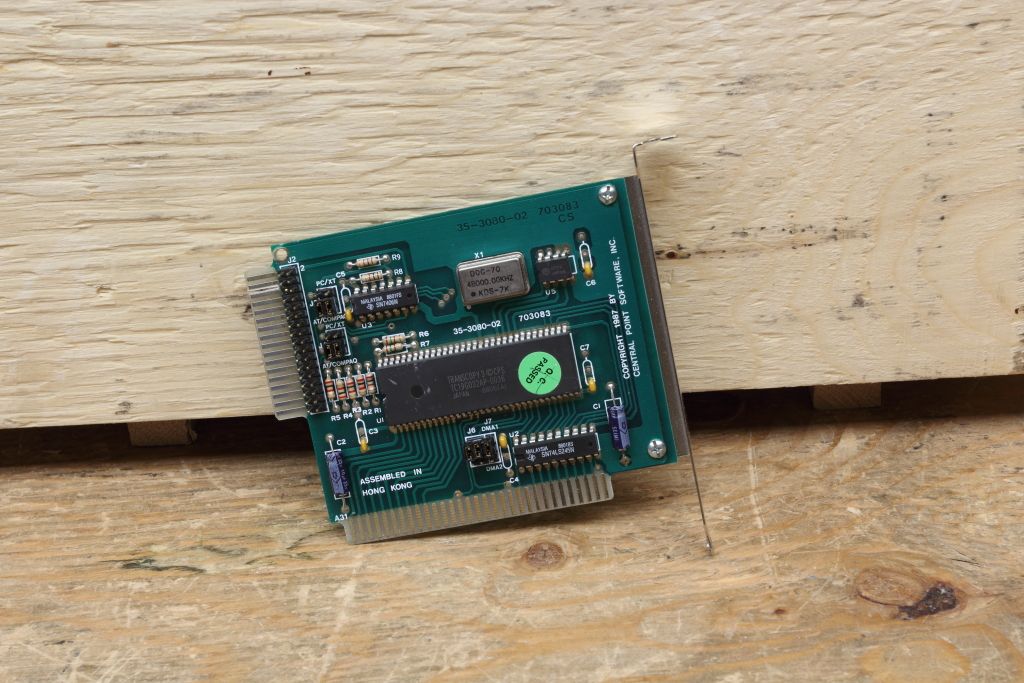

Of course, you can't copy EVERY floppy. Copy protection was one of many ways the industry tried to prevent software duplication but in modern times it makes it considerably harder to read and write some disks. Enter this board. This is the Copy2PC Option Board, sometimes also known as the Deluxe Option Board. CentralPoint Software made three major revisions to their Copy2PC board over the years with the small board using a monolithic ASIC being their last and the best. When combined with various versions of TransCopy (different versions support different copy protection types due to lawsuits as time progressed) allowed you read and write some of the most common copy protection methods that were on the market, PLUS it can handle Macintosh formats. You really can't go wrong with these. They are not a separate floppy controller either. It sits in line with the 34 pin floppy interface and when needed takes over from the floppy controller.
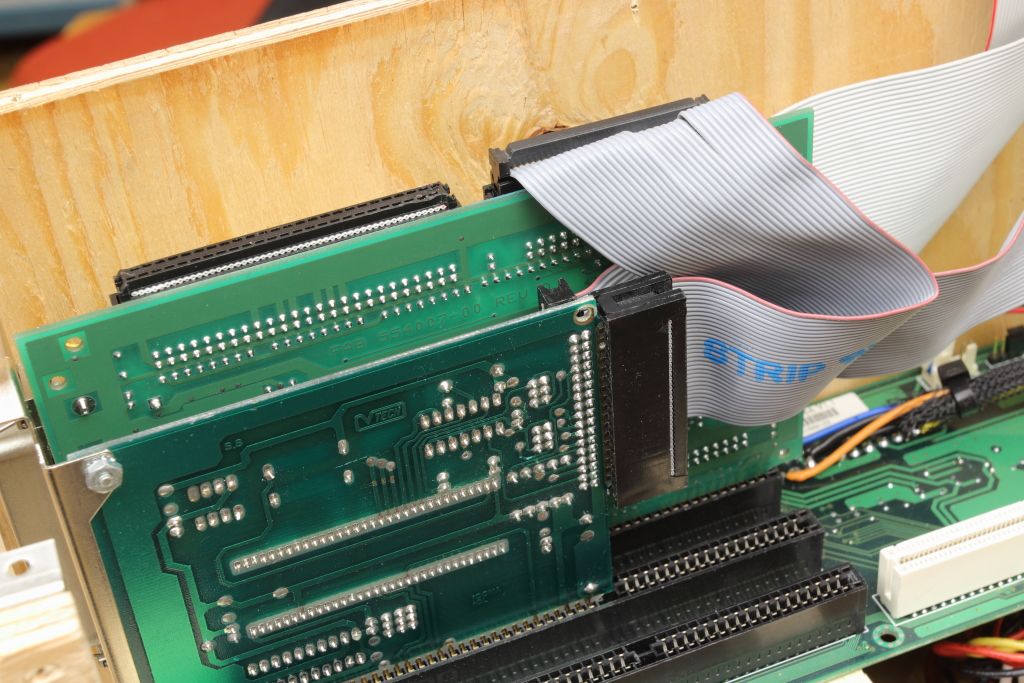

This system was also one of those few times where I opted not to use a mechanical hard drive internally to save space and load on the PSU for other drives being attached. In this case I went with a 16gb Disk on a Module. This way I can create a 2gb FAT16 partition for DOS and that will hold hundreds of floppy images at any time and still leave the other 14gb for another operating system such as Linux, then you can multiboot between the two.
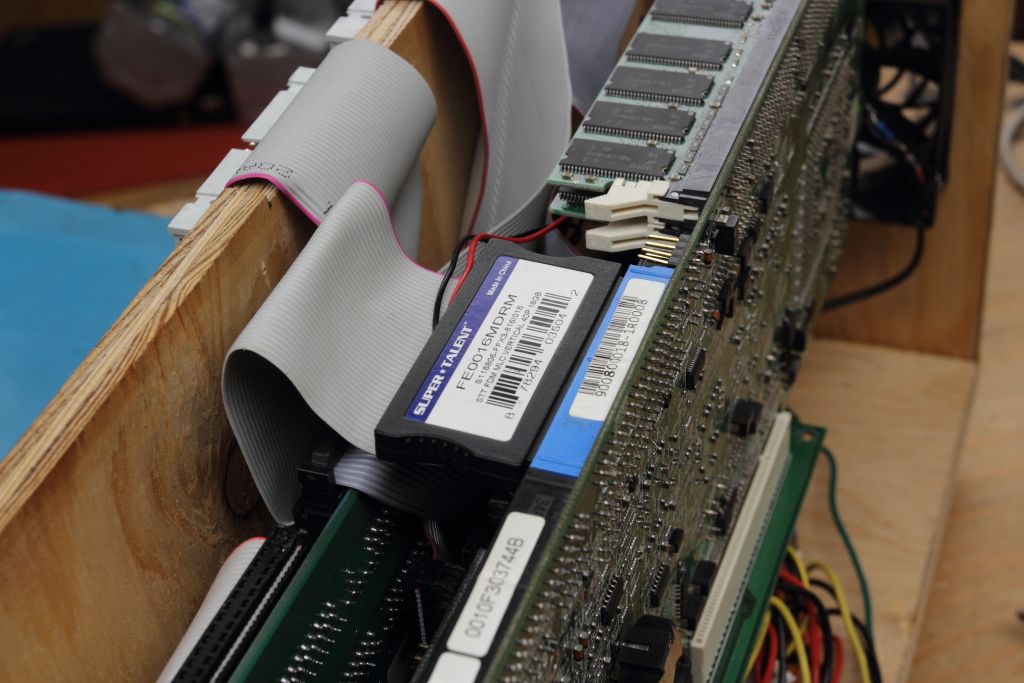
As for software well, your choice.
Like I said the system is a pure DOS environment, so any DOS-based disk utility will run on the platform. In theory you can also of course install Windows however doing so adds a layer of abstraction most of this software is not used to, so beyond DOSSHELL and possibly Windows 3 there's not a lot higher you may want to go.
Linux on the other hand as also stated is an excellent alternate operating in this situation. All of the devices installed have some level of support under the kernel once you build them in. The system itself however doesn't provide the overhead most modern distros need, so rolling your own is a must.
In fact, the SBC on its own comes with its weird quirks. While it does support USB you are not give it from the rear. Instead the decision was to add dual ethernet ports. While these are supported under DOS using Intel's packet driver and mTCP you will at any given time only be needing one to move files on and off the machine.
This system is also one of the few I have ever seen that support PS/2 Y-cables. Under the normal PS/2 spec you cannot share one PS/2 port with a keyboard and mouse however an altered spec exists that allows for these adapters to work. This system requires one if you wish to use both a keyboard and a mouse.
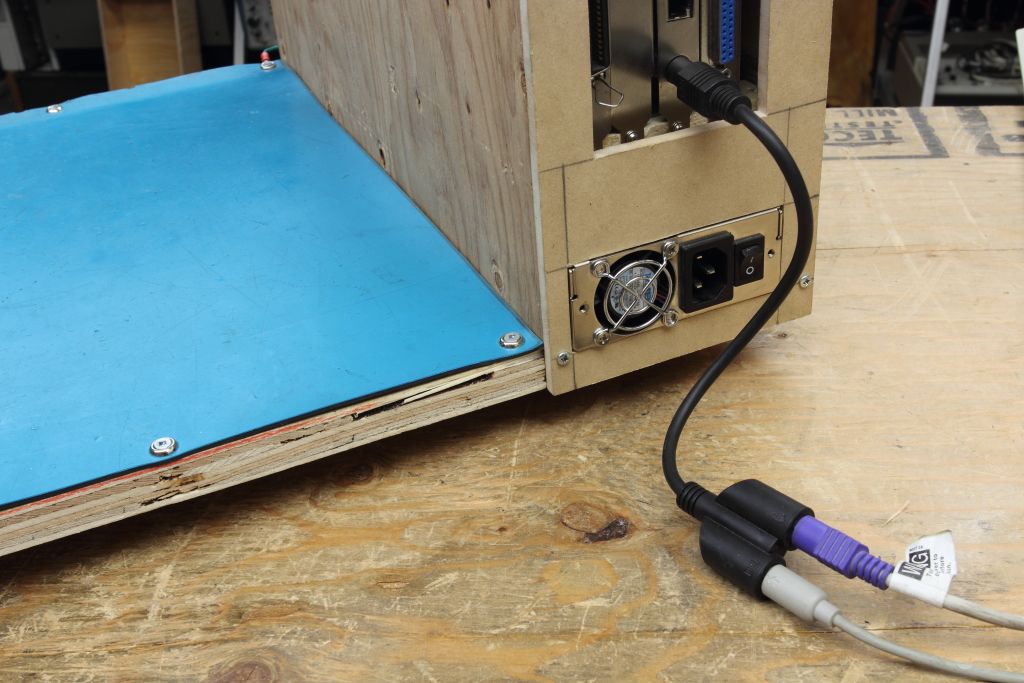
And that is about all there is to the system. From here it begins a new life as a disk handler. While I'm sure others will find better and possibly more compact ways to make the same machine I hope this provides reference for anyone else considering the same thing.
Teledisk and IMGdisk are two such programs. Both are still highly regarded. Building a machine to support either and the variety of drives however is the issue.
Many of the disk imaging systems I've seen are basically PC towers loaded down with floppy drives. This works, but if you need to make any adjustments or more likely you need to clean the heads you need to dismantle everything to perform these tasks. Other systems are quite "open concept" in that it's a motherboard, power supply and a floppy controller spread out over a table and the necessary hardware plugged in. This also works, but with so many critical components exposed and not really secured you run the risk of damaging your imaging system.
I wanted to build a machine that kept the core hardware of the imaging system secure and enclosed while not interfering with the drive or drives being worked on. At the same time I didn't want cables to just create a mess of unused wiring which could add to reliability problems should they be damaged or wear out. My solution was the Disk-o-Matic.


This oddly shaped system is a powerful disk and drive imaging station. It can handle floppy drives obviously but it can also handle IDE and even SCSI devices. Additionally you have serial and parallel ports to allow it to adapt to even more complicated drive types. For example a parallel port allows you to use an X1541 adapter to handle Commodore 1541 floppy formats.
The operating system is of course MS-DOS. Over the last 35+ years a lot of applications have been developed and are still being developed for the OS for the purpose of imaging. It's low-level and in many cases talks directly to the hardware and at the same time is reliable. Provisions have been made at this time to also allow it to multiboot Linux however the addition of several older devices will require a manual kernel compilation to be performed.
Looking at the hardware the first thing to note on the exterior is the large antistatic mat. This is where you can place your drive. It doesn't need to be secured to anything and direct access to the innards are not obstructed by any sort of framework. On the side of the CPU enclosure are a variety of connectors.


These are the main data and power connections. Data passes through passive ribbon bulkheads so that you don't need to be plugging into the boards directly and that can all be kept out of the way. This also means that both the connection from the drive to the bulkhead and from the bulkhead and the drive can be replaced separately in the event they are damaged.


The cabling is all keyed and otherwise flexible to work with, literally. Additionally if you need to create a custom cable for a nonstandard drive you can quite easily assemble one and plug it in without, again, damaging the cabling plugging into the boards. For example if you wanted to use an FDADAP to attach an 8" drive you simply need the 50 pin edge to BERG cable and the passive 34 pin cable. Need power? no problem. That 9 pin connector at the back provides almost every standard voltage you would need. +5, +12, -5, -12, +24 and even 120v AC are all available at the socket. Just pin the new cables accordingly.


While the inside of the enclosure is relatively clean the convenience of dropping a drive on the deck and plugging it in does not include the ease of maintenance. Everything in here is pretty tightly packed and secured. Cables are custom crimped and framing considered. Accessing items such as the main system requires a large amount of dismantling, so don't make any errors when putting it together. ; )

The computer itself is a PEAK-650 Single Board Computer with a 1ghz Celeron processor and 256mb of PC100 ram Standard AWARD BIOS and basic I/O. I like this form factor because it lets you build small systems and not needing a lot of active cooling. The CPU needs it but its own fan is backed up by a main enclosure fan. This is the board where the IDE interface is used but the floppy interface is disabled. That's because this controller is "inferior".


This is the Adaptec AHA-1522A. It's an older non-PnP 16-bit ISA SCSI controller but it is well known to contain a National Semiconductor DP8473AV floppy controller. Floppy controllers are not all made alike and while many controllers will not include support for the more oddball formats nobody was using anymore THIS was happy with all of them. If you run TestFDC on one of these chips it will pass every format test it can throw at it, so this is really what you want. In addition you also get a high quality Adaptec SCSI controller. This allows you to in theory access SCSI hard drives for imaging and even block-level reading and writing. Something I've used heavily under linux, but not so much under DOS.


Of course, you can't copy EVERY floppy. Copy protection was one of many ways the industry tried to prevent software duplication but in modern times it makes it considerably harder to read and write some disks. Enter this board. This is the Copy2PC Option Board, sometimes also known as the Deluxe Option Board. CentralPoint Software made three major revisions to their Copy2PC board over the years with the small board using a monolithic ASIC being their last and the best. When combined with various versions of TransCopy (different versions support different copy protection types due to lawsuits as time progressed) allowed you read and write some of the most common copy protection methods that were on the market, PLUS it can handle Macintosh formats. You really can't go wrong with these. They are not a separate floppy controller either. It sits in line with the 34 pin floppy interface and when needed takes over from the floppy controller.


This system was also one of those few times where I opted not to use a mechanical hard drive internally to save space and load on the PSU for other drives being attached. In this case I went with a 16gb Disk on a Module. This way I can create a 2gb FAT16 partition for DOS and that will hold hundreds of floppy images at any time and still leave the other 14gb for another operating system such as Linux, then you can multiboot between the two.

As for software well, your choice.
Like I said the system is a pure DOS environment, so any DOS-based disk utility will run on the platform. In theory you can also of course install Windows however doing so adds a layer of abstraction most of this software is not used to, so beyond DOSSHELL and possibly Windows 3 there's not a lot higher you may want to go.
Linux on the other hand as also stated is an excellent alternate operating in this situation. All of the devices installed have some level of support under the kernel once you build them in. The system itself however doesn't provide the overhead most modern distros need, so rolling your own is a must.
In fact, the SBC on its own comes with its weird quirks. While it does support USB you are not give it from the rear. Instead the decision was to add dual ethernet ports. While these are supported under DOS using Intel's packet driver and mTCP you will at any given time only be needing one to move files on and off the machine.
This system is also one of the few I have ever seen that support PS/2 Y-cables. Under the normal PS/2 spec you cannot share one PS/2 port with a keyboard and mouse however an altered spec exists that allows for these adapters to work. This system requires one if you wish to use both a keyboard and a mouse.

And that is about all there is to the system. From here it begins a new life as a disk handler. While I'm sure others will find better and possibly more compact ways to make the same machine I hope this provides reference for anyone else considering the same thing.
Last edited:
